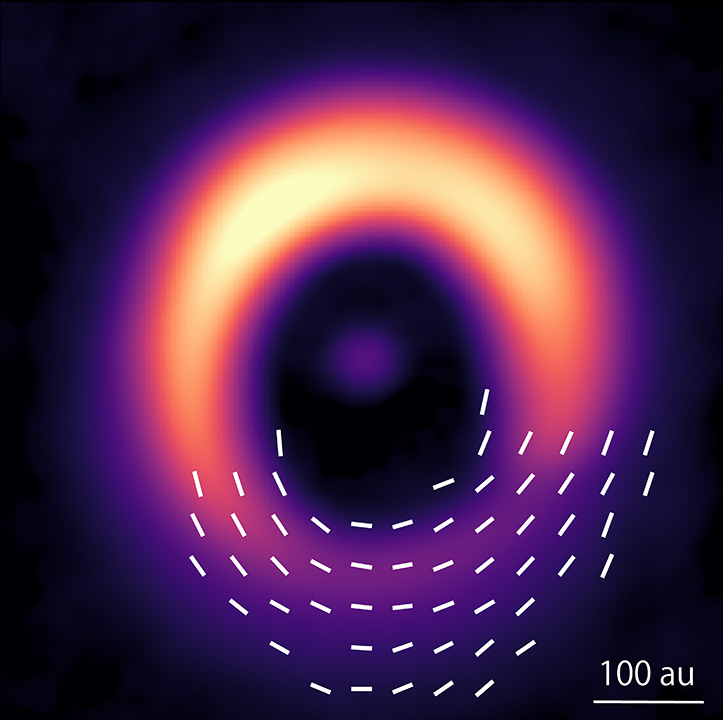
For the first time astronomers have succeeded in observing the magnetic field around a young star where planets are thought to be forming. The team was able to use dust to measure the three-dimensional structure "fingerprint" of the magnetic field. This will help improve our understanding of planet formation.
Planets form in turbulent disks of gas and dust called protoplanetary disks around young stars. It is thought that the first step in planet formation is dust grains colliding and sticking together. The movement of the dust grains is influenced by many forces, including magnetism. Thus, understanding the magnetic fields is important for understanding planet formation, but so far it has not been possible to measure the magnetic fields in a protoplanetary disk.
In this research, an international team of astronomers led by Satoshi Ohashi at the National Astronomical Observatory of Japan used the Atacama Large Millimeter/submillimeter Array (ALMA) to observe the protoplanetary disk around a young star known as HD 142527. This star is located 512 light-years away in the direction of the constellation Lupus. The team found that the dust grains aligned with the magnetic field lines. This allowed the team to detect and measure the unseen magnetic field lines, much the same way iron filings can reveal the magnetic field around a magnet. The team thinks that the measured three-dimensional structure might create strong turbulence withing the protoplanetary disk.
Now that this method of dusting for a young star's magnetic fingerprint has been proven to work, the team wants to apply it to more stars, and measure the magnetic field closer to the star to better understand the magnetic conditions where planets are forming.
Detailed Article(s)
Magnetic Field in Planet Formation has been Successfully Observed
ALMA
Release Information
Researcher(s) Involved in this Release
- Satoshi Ohashi (National Astronomical Observatory of Japan)
Coordinated Release Organization(s)
- National Astronomical Observatory of Japan
- RIKEN
- Kogakuin University
- Ibaraki University
- Ashikaga University
Paper(s)
- Satoshi Ohashi et al. "Observationally derived magnetic field strength and 3D components in the HD 142527 disk", in Nature Astronomy, DOI:10.1038/s41550-024-02454-x






